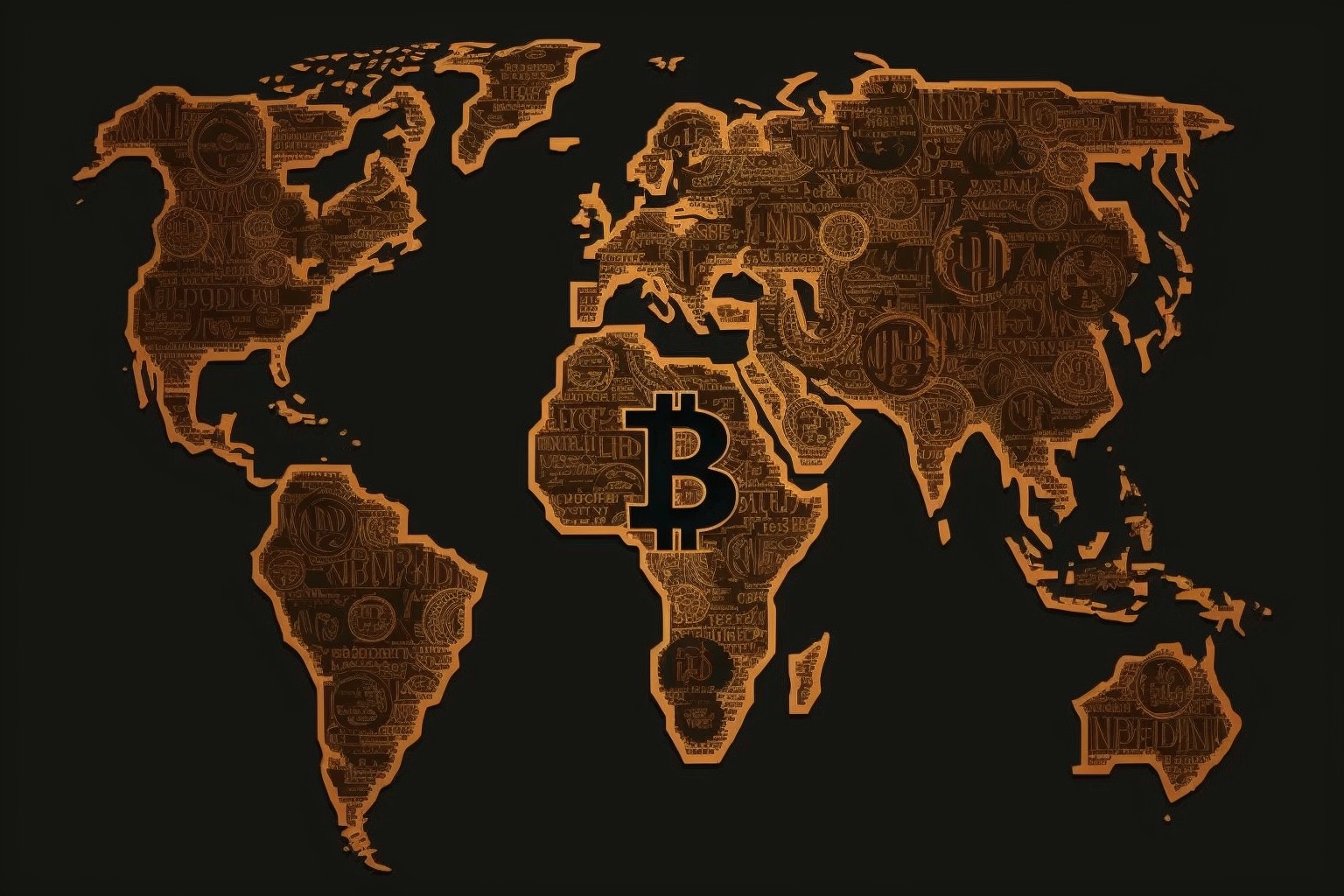Cryptocurrencies have been a hot topic in recent years, with many speculating that they will revolutionize the world of finance. From Bitcoin to Ether, there is a multitude of digital currencies that have gained popularity, with investors rushing to get in on the action.
While the appeal of cryptocurrencies is undeniable, many are still questioning if it really is the future of money or just a passing fad. In this article, we will explore the current state of cryptocurrency, predictions for the future, and what this all means for crypto investors.
What are cryptocurrencies?
Cryptocurrencies are digital or virtual currencies that are built on blockchain technology, making them difficult to counterfeit or double-spend. Unlike traditional currencies, cryptocurrencies are decentralized and operate without a central authority like a government or bank. Instead, transactions are recorded on a public ledger called a blockchain that allows for secure and transparent peer-to-peer transactions.
The first and most well-known cryptocurrency is Bitcoin, created in 2009 as a decentralized digital currency. Since then, thousands of other cryptocurrencies have been created, each with its own uses and values. Some of the most popular other cryptocurrencies include Ether, Ripple, Litecoin, and Tether. These cryptocurrencies have varying degrees of adoption, with some being used mainly for investment purposes while others are used for specific purposes like smart contracts or micropayments.
While the idea of digital currencies may still be over the head of many people, they have many potential advantages over traditional currency, including lower transaction fees, faster transaction times, and increased privacy. However, they can also come with high levels of volatility and risks associated with investing in emerging technologies.
What is “DeFi”?
Decentralized finance (DeFi) is an emerging financial technology based on secure distributed ledgers similar to those used by cryptocurrencies. It is an umbrella term for peer-to-peer financial services on public blockchains, primarily Ethereum, that replicates traditional financial functions through smart contracts. DeFi allows users to buy and sell assets without a go-between, long wait times or high exchange fees.
DeFi is accessible to anyone with an internet connection and operates without the involvement of traditional financial middlemen such as banks or brokers. It comprises a variety of financial applications in cryptocurrency or blockchain geared towards providing users with more control over their finances.
DeFi provides users with more control over their finances and helps them access a wider range of services than what traditional finance offers.
The current state of crypto
The current state of crypto is one of growth and innovation. The industry is constantly evolving, with new technologies, regulations, and applications being developed every day. There are now hundreds of different cryptocurrencies available for purchase and trade on centralized and decentralized crypto exchanges around the world.
The banking sector has been slow to embrace cryptocurrency, but this may be changing as some UK banks begin to accept transfers related to crypto trading. This could open up more opportunities for investors looking to get involved in the space.
On the other hand, we are seeing a crackdown on banks serving the crypto industry in the US, and many predict harsh crypto regulation proposed by the Securities and Exchange Commission, so there is still much uncertainty about the near future of crypto.
Artificial intelligence (AI) is also playing an increasingly important role in the crypto space, with AI-powered tools being used for everything from automated trading bots to market analysis tools. As AI continues to evolve, so too will its use cases within the crypto industry, allowing for more efficient trading strategies and better insights into market trends.
Overall, the current state of crypto is one of the exciting possibilities, with new applications emerging every day that can help make investing easier and more profitable than ever before. With more governments beginning to recognize cryptocurrency as a legitimate asset class, it’s likely that we’ll see even greater adoption rates in the coming years, which could lead to even bigger returns for investors who get in early enough.
Predictions for 2023 and beyond
The future of cryptocurrency is something that has long been debated, with many people divided on whether it will prosper or fizzle out. With the crypto market constantly evolving, it can be difficult to predict what will happen next. Nonetheless, industry experts have made several predictions for what the future may hold for crypto. In this section, we will delve into these predictions and explore what the next few years could look like for the world of cryptocurrency.
Short-term pain, but the future looks bright
Despite the hype surrounding cryptocurrencies, it hasn’t been all smooth sailing during 2022. The market has experienced a good deal of volatility, with steep dives followed by erratic rallies.
The main force behind these movements was macroeconomic factors impacting the global economy, but crypto events such as the FTX scandal also left their mark on the space, leading to what many call a “crypto winter”. This has left many investors feeling uncertain about the future of crypto.
Many analysts believe that short-term pain is likely to be experienced in the crypto space in the next few years. Several factors may contribute to this, including increased government regulations, cybersecurity concerns, and liquidity issues.
However, despite these potential challenges, most experts predict a bright future for the crypto market in the long run, based on the likely turn in US monetary policy, the upcoming Bitcoin halving and other bullish developments.
Crypto regulation is coming
As cryptocurrencies become increasingly mainstream, it is inevitable that they will come under increased regulatory scrutiny. Governments around the world are starting to take notice of the massive amounts of money flowing through crypto markets and are increasingly seeking to establish controls over digital currencies.
In the United States, there are already several proposed regulations aimed at increasing oversight and combating fraud in the crypto market. Meanwhile, jurisdictions such as China and India have banned cryptocurrencies outright or severely restricted their use.
Regulations in the near future are likely to focus on anti-money laundering (AML) and know-your-customer (KYC) policies, as well as measures to address cybersecurity risks associated with cryptocurrencies. While regulations can provide a sense of security for cryptocurrency investors, it remains to be seen how they will affect the overall health of the crypto market.
On one hand, regulations may provide a level of stability and legitimacy to the cryptocurrency market. On the other, they may stifle innovation and create more red tape for companies looking to advance the technology. As this is an emerging area, it is important that regulators approach the situation with an open mind and collaborate with industry experts to find a balanced solution.
Like it or not, regulation is coming, and it will change the way cryptocurrencies operate. While some may view it as a negative development, it could ultimately help to pave the way for broader acceptance and greater adoption of digital currencies. Understanding and working with regulations will be an important part of the future of crypto.
Adoption continues to increase
Despite the challenges and uncertainties that come with investing in cryptocurrencies, one thing is clear: crypto analytics show that adoption continues to increase. As more people become interested in the benefits of decentralized currencies, the market is likely to continue to grow exponentially in the years to come.
One reason for this increase is the growing number of businesses that are beginning to accept crypto transactions. A wide range of major companies now accepts Bitcoin payments. Blockchain-based payment solutions are already being worked on by Visa, MasterCard, PayPal, and other major payment providers.
In the developing world, cryptocurrencies are being used to address banking and remittance issues. In countries such as Venezuela and Zimbabwe, where hyperinflation has caused the national fiat currencies to be virtually worthless, cryptocurrencies have become a more stable and viable alternative for many citizens looking to protect their savings.
Institutional investors have increasingly been turning their attention to the crypto market. Recent developments like the approval of Bitcoin futures contracts by the Chicago Mercantile Exchange and the launch of institutional-grade custody solutions have opened the door for more institutional investment in the space. Financial heavy-hitters such as BlackRock are getting involved. Sophisticated crypto exchanges such as Binance and Coinbase continue to develop new tools, making crypto trading easier.
Overall, cryptocurrencies are here to stay and are likely to become an increasingly important part of the financial landscape. As more businesses accept digital currencies and more institutional investors get involved, the market is likely to become more sophisticated and better understood, leading to further growth and mass adoption in the years to come.
Web3 continues to grow
Web3 is the next generation of the internet, where blockchain technology and decentralized applications (dApps) are used to build a more democratic and decentralized network. Web3 is expected to create a more web-native financial system by enabling individuals to become their own banks and own their own data.
The growth of Web3 is one of the most significant developments in the cryptocurrency sector, and it is expected to continue in the years to come. The technology will create a more connected and interoperable ecosystem of dApps that work together seamlessly, which could revolutionize everything from payments to social media.
One of the most significant benefits of Web3 is that it enables users to maintain their privacy and control over their data. In the current centralized internet, tech giants like Google and Facebook have access to vast amounts of user data, which they can use to generate revenue. In a Web3 world, individuals own their data, and they decide who can access it.
The lack of centralized authority in Web3 will create a more transparent, open, and democratic ecosystem. Unlike traditional financial systems that can be manipulated by powerful interests, Web3 is designed to be resistant to corruption and censorship-resistant, ensuring greater equity and fairness across the board.
As the Web3 ecosystem continues to grow, it is expected to create new opportunities for both developers and investors. As blockchain-based applications become more sophisticated and user-friendly, we are likely to see more mainstream adoption of this technology.
Gaming and NFTs will be back
Gaming and non-fungible tokens (NFTs) are two areas where cryptocurrencies are expected to become increasingly popular in the next few years. In 2021, we saw a huge boom in the NFT market and major NFT investments from industry giants such as Meta, with some digital assets selling for millions of dollars. However, towards the end of the year, the NFT market experienced a cooling-off period, leading some to question whether NFTs were just a bubble.
Despite this setback, experts predict that NFTs will continue to play a major role in the crypto market in the years to come. Blockchain gaming, in particular, is expected to grow significantly, as it allows for the use of digital assets as in-game items or currencies. Blockchain-based games governed by DAOs – decentralized autonomous organizations – can create a more immersive and engaging gaming experience, and they also allow players to truly own the assets they earn in the game.
NFTs are also being used in a variety of other industries, from music to art to real estate. They allow creators to monetize their digital content and establish verifiable ownership, creating new revenue streams and business models that were never before possible.
As more people become aware of the benefits of decentralized finance and blockchains, it is likely that we will see a renewed interest in NFTs and gaming. As the gaming industry continues to embrace blockchain technology, it is expected to attract more mainstream investors and consumers. Some of the successful gaming tokens are expected to outperform Bitcoin during the next bull market.
Overall, while there may be short-term fluctuations for crypto projects in the NFT and gaming markets, they are both expected to continue to grow in the years to come. As the crypto market evolves and matures, we are likely to see more innovative uses for NFTs and gaming, which could ultimately transform these industries in exciting and unexpected ways.







